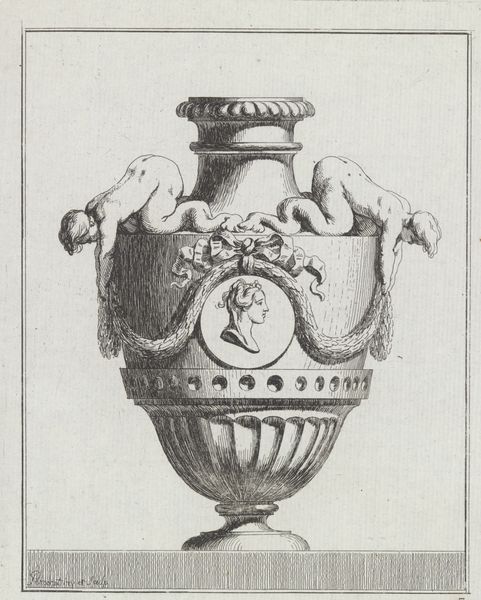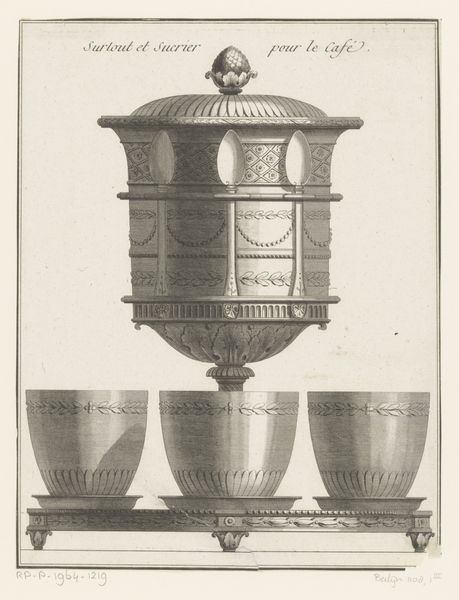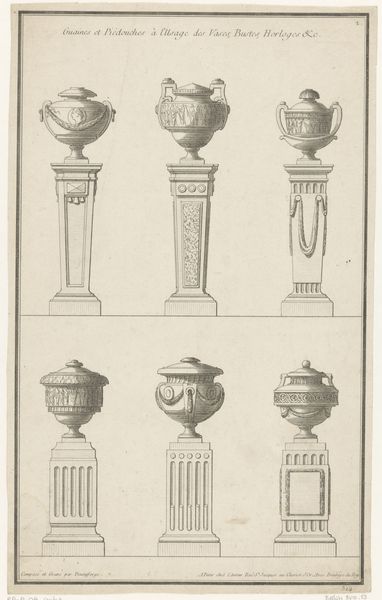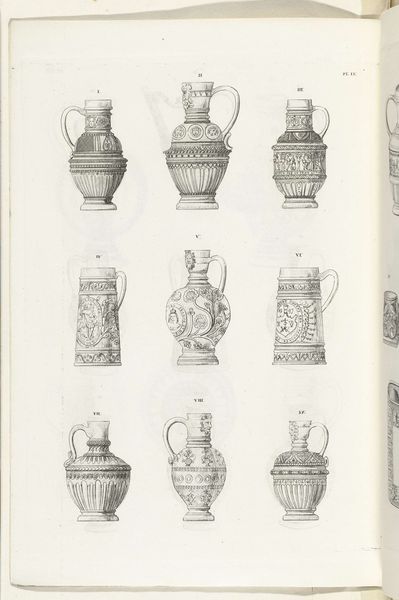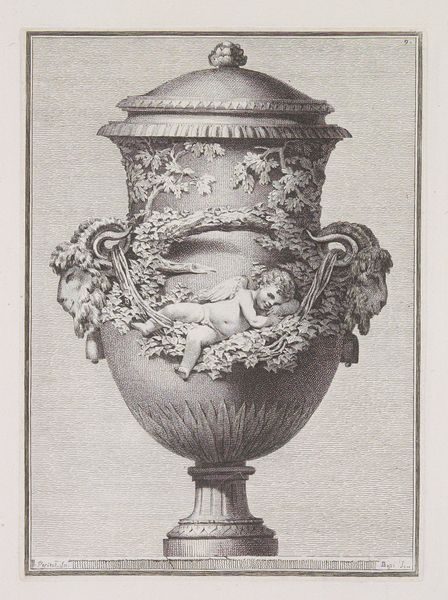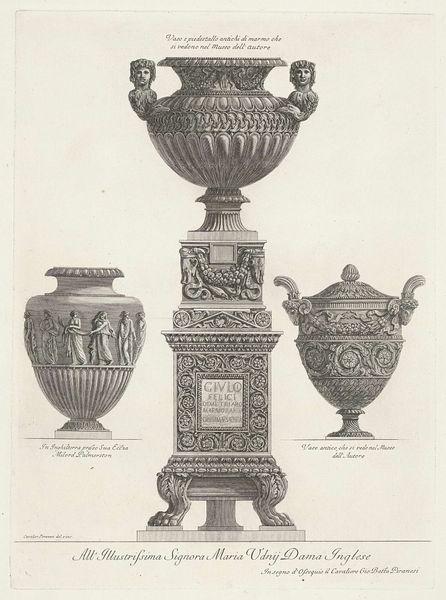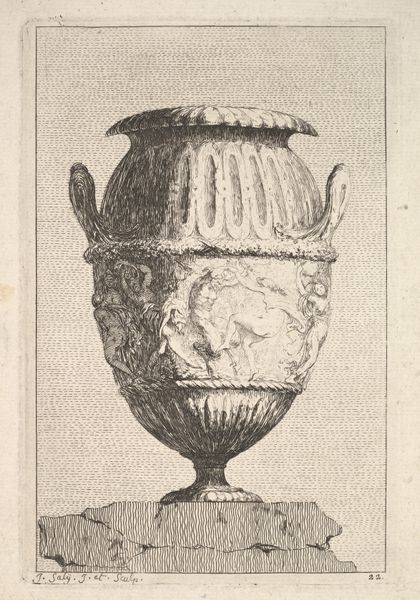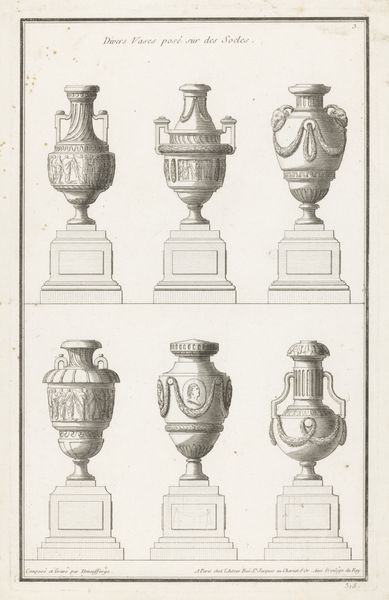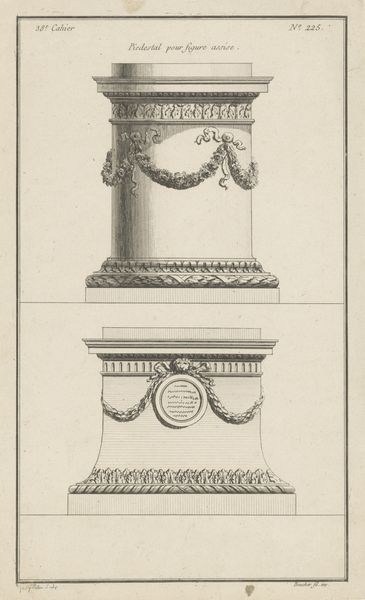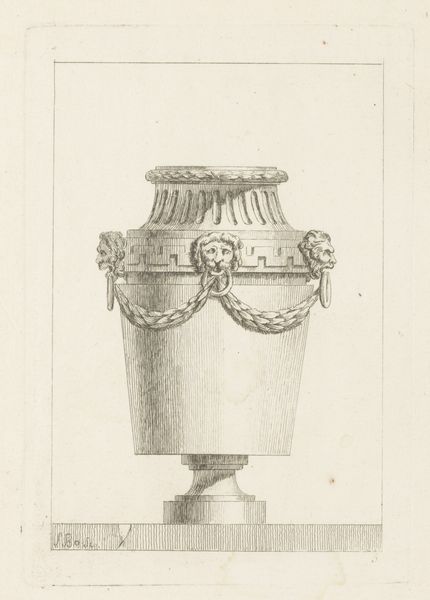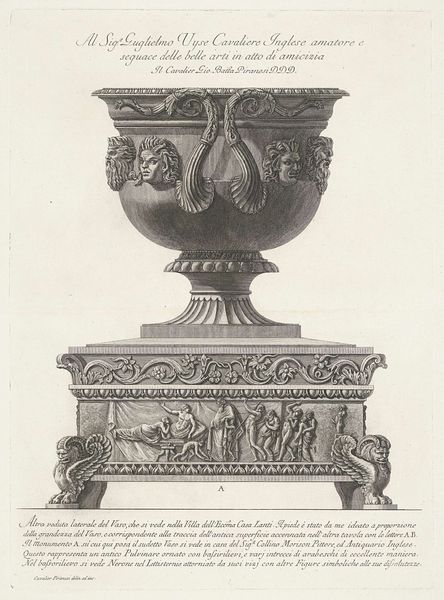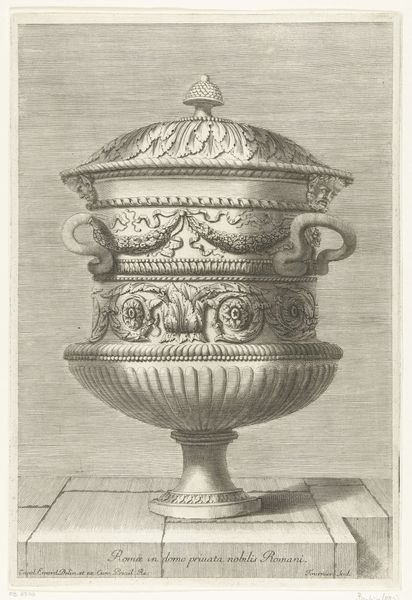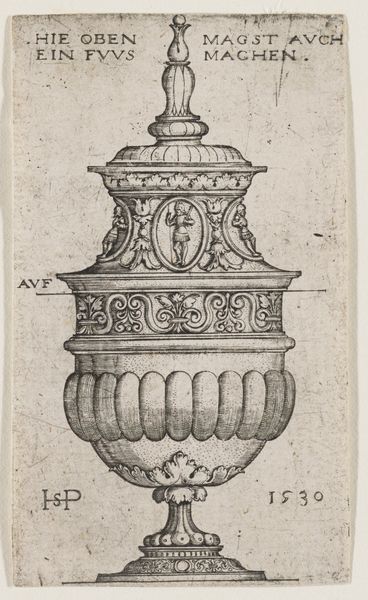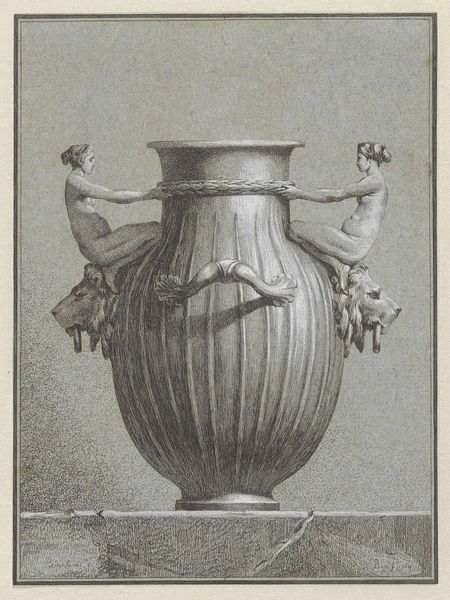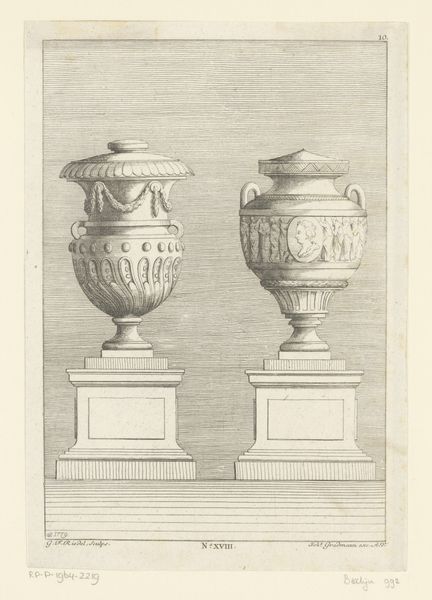
drawing, print, etching, engraving, architecture
#
drawing
# print
#
etching
#
sculpture
#
perspective
#
form
#
romanesque
#
geometric
#
column
#
engraving
#
architecture
Copyright: Public domain
Editor: This etching is called "Pieces of columns and capitals" by Giovanni Battista Piranesi, though it's undated. I’m immediately drawn to the level of detail and how precisely each fragment of architecture is rendered. The presentation feels almost scientific, yet each fragment feels monumental. How do you read this work? Curator: For me, Piranesi's work represents a pivotal moment in the reception of antiquity. Rather than simply documenting Roman ruins, he's dissecting and categorizing them, much like a scientist might classify specimens. Consider the cultural context: Piranesi was working during the Enlightenment, when empirical observation and reason were ascendant. Does this systematization affect how we understand Roman power? Editor: It’s interesting that you see a connection with Enlightenment ideals. It highlights the ambition to classify and understand the ancient world through these carefully drawn fragments. I guess it invites a certain critical approach. Does this emphasis on individual pieces detract from our understanding of their original context, their role in Roman society and public life? Curator: That’s a very perceptive question. One could argue that by isolating these fragments, Piranesi aestheticizes them, transforming them into objects of contemplation divorced from their socio-political function. Look at how the scale of the print and his intense, dramatic perspective almost fetishizes these fragments, turning them into individual monuments on paper. What happens to their intended purpose? Editor: That is thought-provoking! I hadn't considered how the very act of isolating and displaying them reframes them in a completely new way, away from politics and closer to personal reflection, or appreciation of antiquity as a discipline. I suppose that is what is powerful here. Curator: Precisely. We see not only fragments of Roman architecture but also a reflection of how the Enlightenment was wrestling with the legacy of Roman power. It offers so many readings of architectural legacy!
Comments
No comments
Be the first to comment and join the conversation on the ultimate creative platform.
